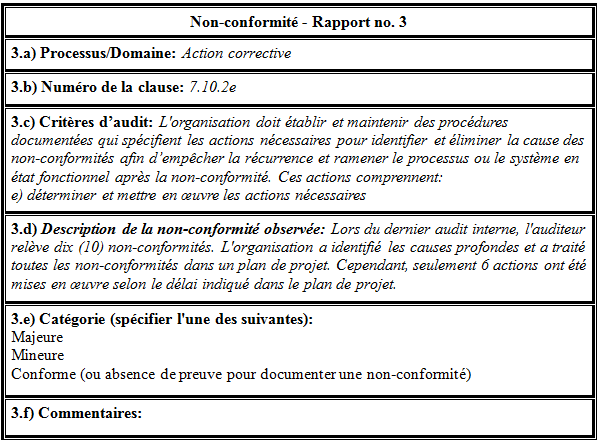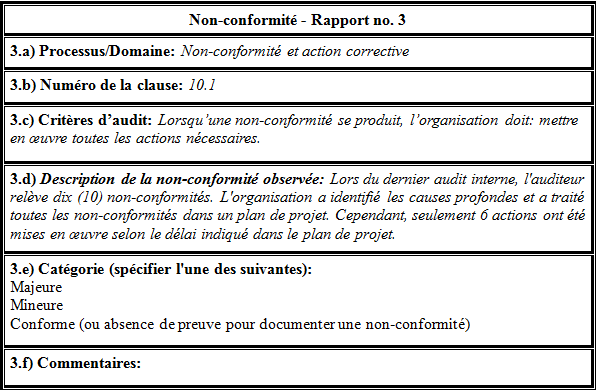The transitioning process from ISO/IEC 27001:2013 to ISO/IEC 2....
ISO 50001 Energy Management System

Introduction
“Using energy efficiently helps organizations save money as well as helping to conserve resources and tackle climate change.” ISO.org
Understanding the importance of energy management is not that difficult, since there is a considerably large amount of data that needs to be gathered, documented, analyzed and accounted in a systematic way.
ISO 50001:2011 was established to support organizations in all sectors to use energy more efficiently through the implementation of an Energy Management System (EnMS).
ISO 50001:2011 affects up to 60 percent of the world’s energy consumption and has the potential of a global trade catalyst, for industrial energy efficiency in the same way that ISO 9001 has for quality.
The implementation of an Energy Management System within an organization requires a change in existing institutional practices towards energy. Systematic management and the behavior approach have become the core efforts to improve energy efficiency today. The purpose of ISO 50001 is to enable organizations to establish the Energy Management System and its processes to improve energy performance and increase cost savings.
Organizations of all sizes and types should engage in a systematic and comprehensive process that will help the business in:
- Reducing energy related to operational costs,
- Increasing energy efficiency,
- Demonstrating commitment to sustainability,
- Supporting energy conservation,
- Reducing greenhouse gas emissions,
- Improving the use of energy assets, and
- Refining energy procurement practices.
Up to the end of December 2014, at least 6,778 of ISO 50001:2011 certificates, a growth of 40 % (+1, 952), had been issued in 80 countries and economies, 58 more than in 2011.
The top three countries for the total number of certificates and growth in number of certificates in 2014 were Germany, France and Spain.
The table below summarizes the statistics of the ISO 50001 certifications around the world.

ISO 50001 is based on the Plan - Do - Check - Act (PDCA) continual improvement framework and incorporates energy management into everyday organizational practices.
In the context of energy management, the PDCA approach can be outlined as follows:
- Plan: conduct the energy review and establish the baseline, energy performance indicators (EnPIs), objectives, targets and action plans necessary to deliver results that will improve energy performance in accordance with the organization's energy policy;
- Do: implement the energy management action plans;
- Check: monitor and measure processes and the key characteristics of operations that determine energy performance against the energy policy and objectives, and report the results;
- Act: take actions to continually improve energy performance and the EnMS.

Who has benefited from 50001 so far?
Bentley, Coca-Cola, Delta Electronics in China, Schneider Electric of France, the Dahanu Thermal Power Station in India, and LCD TV maker AU Optronics Corp of Taiwan, Province of China, are just some of the organizations that have reported benefits of using ISO 50001.
Industry (51% world energy use) – The ISO 50001 standard for machines and equipment, combustion engines, refrigeration and air conditioning, automation systems, industrial fans, fluid power systems, compressors, air and gas cleaning equipment, etc., increase performance and effectiveness to reduce power consumption.
Transport (27% world energy use) – The ISO 50001 standard for ships, aircraft, road vehicles, motor cycles and mopeds address issues such as fuel consumption and emissions. The ISO 50001 standard for electric and natural gas vehicles, and fuelling stations, will help disseminate this cleaner technology around the world, facilitating economies of scale.
Commercial and residential sector (22% world energy use) - The ISO 50001 standard includes design, construction, operation and maintenance that help reduce energy consumption in buildings, while ensuring an acceptable indoor environment. They cover areas such as thermal performance, insulation, materials and products, components and elements, energy use calculation, climatic data, ventilation, energy conservation, sustainability, carbon metrics, lighting, refrigeration and air- conditioning.
An overview of ISO 50001:2011
ISO 50001 provides guidelines on how to design and implement an Energy Management System that meets the goals and objectives of reducing energy consumption and increasing efficiency.
The components required for an effective EnMS include the energy policy and setting of objectives, targets and action plans. ISO 50001 allows organizations to meet their energy policy requirements, and take whatever action necessary to improve upon their energy performance.
How to ensure energy efficiency?
Organizations shall consider the following guidelines included in the main clauses of this International Standard to help ensure energy efficiency.
It’s used to improve an existing business process.
Key clauses of ISO 50001:2011
Clause 4.1: General Requirements Clause 4.2: Management Responsibility Clause 4.3: Energy Policy
Clause 4.4: Energy Planning
Clause 4.5: Implementation and Operation Clause 4.6: Checking
Clause 4.7: Management Review
What is an Energy Management System? An Energy Management System is a set of interrelated or interacting elements to establish an energy policy, energy objectives, processes and procedures to achieve those objectives.
Each of these key activities is overviewed below.
Clause 4.1: General requirements
The organization shall establish, document, implement, maintain and improve an energy management system based on ISO 50001, and define its scope and boundaries.
Clause 4.2: Management responsibility
Top management shall demonstrate its commitment to support the energy management system and to continually improve its effectiveness, through:
- An energy policy;
- A management representative and an energy management team;
- Resources (human resources, specialized skills, technology, financial resources);
- The scope and boundaries of the energy management policy;
- Communication;
- The establishment of energy objectives and targets; and
- Management reviews.
Clause 4.3: Energy policy
The energy policy recaps the client’s best approach for identifying, capturing, and tracking energy savings and prevention of costs. The energy policy states the organization's commitment for achieving energy performance and improvement. In addition, it ensures appropriateness to the nature and scale of the organization's energy use and consumption.
Clause 4.4: Energy planning
- Meeting legal and other requirements
- Development of an energy review
- Establishment of an energy baseline
- Identification of energy performance indicators
- Execution of energy objectives, targets and action plans
Clause 4.5: Implementation and operation
It is recommended for the organization to use the performed action plans and other outputs resulting from the planning process, for the implementation and operation of the energy management system.
The processes involved in the implementation and operation phase are:
- Competence, training and awareness,
- Communication,
- Documentation,
- Operational control, and
- Design.
Clause 4.6: Checking
- Monitoring, measurement and analysis of the management system’s operations,
- Evaluation of compliance with legal and other requirements,
- Conducting an internal audit,
- Addressing nonconformities by making corrections, taking corrective actions and preventive actions, and
- Controlling of records.
Clause 4.7: Management review
The inputs and outputs of the management review play an important role in ensuring the energy management system’s continuing suitability, adequacy and effectiveness.
Link of ISO 50001 with other standards
ISO 50001 can be easily linked with ISO 9001 and ISO 14001. ISO 50001 focuses on energy efficiency, whilst ISO 14001 emphasizes the significant environmental impacts of an organization.
Both standards can be either individually implemented or with each other. These standards can also be integrated with other management system standards, such as ISO 9001.
- ISO 12655, Energy Performance of buildings
- ISO 13153, Framework of the design process for energy saving
- ISO/TC 180, Solar energy
- ISO/TC 238, Solid Biofuels
- ISO 14067, Greenhouse gas emissions
- ISO 13790, Calculation of energy use for heating and cooling
- ISO 18292, Energy performance of fenestration (windows) systems
ISO 50001 opposed to 14001
Although ISO 50001 is closely associated to ISO 14001, this standard highlights more importance on the continual improvement of energy performance, including energy efficiency, energy use and consumption.
ISO 50001 can either be used in combination with ISO 14001, to help identify additional opportunities for energy savings, or as a single management system standard for those organizations concerned about energy costs and their environmental impact.
Energy is one of the pillars of ISO 14001.
The exclusive elements of ISO 50001 are all focused on technical activities:
- 4.4.3 Energy review,
- 4.4.4 Energy baseline,
- 4.4.5 Energy performance indicators,
- 4.5.6 Design
- 4.5.7 Procurement of energy services, products, equipment and energy).
What are the business benefits of an energy management system?
As with all the major undertakings within an organization, it is essential to gain the backing and sponsorship of the executive management. By far, the best way to achieve this is to illustrate the positive gains of having an effective energy management process in place, rather than highlight the negative aspects of the contrary.
Today an effective energy management system is not about being forced into taking action to address external pressures, but its importance relies on recognizing the positive value of energy management when good practice is embedded throughout your organization.

- Root for integrating energy efficiency into management practices;
- Developing better use of existing energy-consuming assets;
- Benchmarking, measuring, documenting, and reporting energy intensity improvements and their impact on greenhouse gas emissions;
- Effective communicating on the management of energy resources;
- Energy management best practices and good energy management behaviors;
- Evaluating and prioritizing the implementation of new energy-efficient technologies;
- Provision of a framework for promoting energy efficiency throughout the supply chain; and
- Improvement of energy procurement practices.
Why is PECB a worthy chocie ?
Implementation of EnMS with IMS2 methodology
Considering the well documented benefits of implementing an Energy Management System based on ISO 50001, makes the proposal easier to decide on.
Most companies now realize that it is not sufficient to implement a generic, “one size fits all” energy plan. For an effective response, with respect to maintaining the energy management system, such a plan must be customized to fit to a company. A more difficult task is the compilation of an implementation plan that balances the requirements of the standard, the business needs and the certification deadline.
There is no single blueprint for implementing ISO 50001 that will work for every company, but there are some common steps that will allow you to balance the frequent conflicting requirements and prepare you for a successful certification audit.
PECB has developed a methodology (please see example below) for implementing a management system; the “Integrated Implementation Methodology for Management Systems and Standards (IMS2)”, and it is based on applicable best practices. This methodology is based on the guidelines of ISO standards and also meets the requirements of ISO 50001.

IMS2 is based on the PDCA cycle which is divided into four phases: Plan, Do, Check and Act. Each phase has between 2 and 8 steps for a total of 21 steps. In turn, these steps are divided into 101 activities and tasks. This ‘Practical Guide’ considers the key phases of the implementation project from the starting point to the finishing point and suggests the appropriate ‘best practice’ for each one, while directing you to further helpful resources as you embark on your ISO 50001 journey.
The sequence of steps can be changed (inversion, merge). For example, the implementation of the management procedure or documented information can be done before the understanding of the organization. Many processes are iterative because of the need for progressive development throughout the implementation project; for example, communication and training.
By following a structured and effective methodology, an organization can be sure it covers all minimum requirements for the implementation of a management system. Whatever methodology used, the organization must adapt it to its particular context (requirements, size of the organization, scope, objectives, etc...) and not apply it like a cookbook.
The sequence of steps can be changed (inversion, merge). For example, the implementation of the management procedure for documented information can be done before the understanding of the organization. Many processes are iterative because of the need for progressive development throughout the implementation project; for example, communication and training.
By following a structured and effective methodology, an organization can be sure it covers all minimum requirements for the implementation of a management system. Whatever methodology used, the organization must adapt it to its particular context (requirements, size of the organization, scope, objectives, etc...) and not apply it like a cookbook.
Steps for obtaining a PECB certification

Principal Authors:
Eric LACHAPELLE, PECB
Mustafë BISLIMI, PECB



